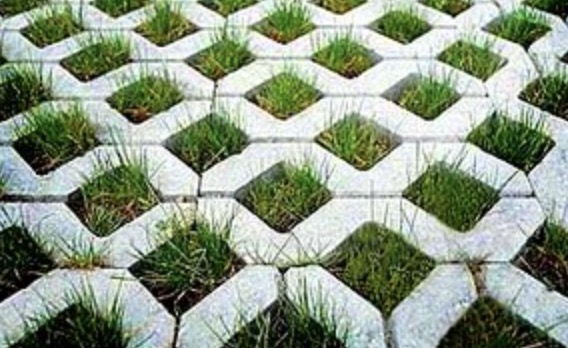Permeable surfaces are becoming increasingly popular in the fields of construction and landscaping due to their sustainability benefits. These innovative surfaces allow water to filter through or runoff, which has the potential to improve our environment greatly. In this post, we will explore the advantages of surfaces and their positive impact on the environment.
Story Stages
1. Reducing Stormwater Runoff
Traditional impermeable surfaces like concrete and asphalt contribute to an increase in runoff, causing soil erosion and overwhelming drainage systems. However, permeable surfaces from highly reputable companies like Stone Set help address this issue by allowing rainwater to infiltrate into layers rather than accumulating on the surface. This process helps recharge groundwater levels, minimises flooding risks, and prevents pollutants from entering rivers, lakes and streams.
2. Promoting Groundwater Recharge
One significant benefit of surfaces is their ability to facilitate groundwater recharge. As rainwater filters through these surfaces naturally and reaches subsoil layers, it replenishes aquifers that serve as freshwater sources for both ecosystems and human populations. By maintaining water tables through groundwater recharge, permeable surfaces contribute to ecological balance while reducing dependence on external freshwater sources.
3. Preserving Natural Microbial Communities
Impermeable surfaces disrupt processes by blocking the entry of water into the ground along with nutrients necessary to support biological activity. On the contrary, permeable surfaces preserve communities by allowing beneficial microorganisms, which are crucial for breaking down pollutants in stormwater, to thrive undisturbed beneath the surface. This not only maintains the health of ecosystems but also enhances the overall quality of water in nearby lakes or streams.
4. Mitigating the Heat Island Effect
Urban environments often face heat buildup due to an amount of impermeable surfaces absorbing heat during warm months. This phenomenon, known as the “heat island effect”, can be countered effectively through the use of surfacing materials. These materials enable rainwater to naturally cool and evaporate slowly, thereby minimising heat absorption. This simple, effective strategy can have an impact on reducing urban temperatures and improving living conditions in cities.
5. Reducing Dependence on Downstream Water Treatment
Stormwater runoff from surfaces typically carries pollutants like oil, heavy metals, and pesticides, necessitating extensive treatment before it can be safely reused or re-entered in natural water bodies. Permeable surfaces help alleviate this burden by acting as filters that capture pollutants within soil layers below them.
Permeable surfaces offer advantages, including cost savings and a healthier environment by reducing the need for water treatment facilities.
6. Promoting Biodiversity
Unlike surfaces that remove natural habitats and limit vegetation growth, permeable surfaces create environments where plants can thrive. They allow plant roots to penetrate deeper into the soil, which encourages biodiversity to establish itself. These biodiverse habitats support wildlife populations by creating ecosystems for their survival and contribute significantly to a greener future.
7. Enhancing Landscape Aesthetics
Apart from their benefits, permeable surfaces also enhance the appeal of outdoor spaces. Unlike surfaces that often appear monotonous in grey or black colours, permeable options offer a wide range of choices. By selecting materials like stone or decorative pavers that complement the surrounding environment, you can add creativity and versatility to landscaping projects, resulting in appealing and functional spaces.
Permeable surfaces find applications in driveways, parking lots, walkways, patios and larger commercial developments. By choosing options that harmonise with the overall design scheme and existing surroundings, you can create functional spaces that also enhance the beauty of urban landscapes.
The combination of sustainability and aesthetics makes permeable surfaces a great choice for those who want to create spaces that are environmentally conscious and visually appealing.
Conclusion
As more people become aware of the benefits of permeability and the best practices associated with its implementation in planning projects (such as parking lots or residential developments), its usage will inevitably become more widespread. The principles of increased groundwater recharge, responsible stormwater management and harmonious blending with our surroundings will guide all endeavours on this path towards a sustainable world.
